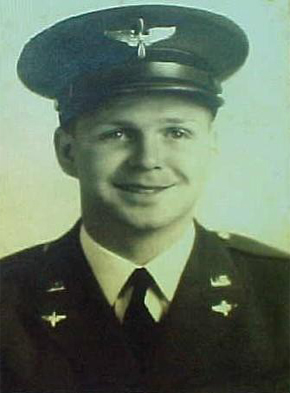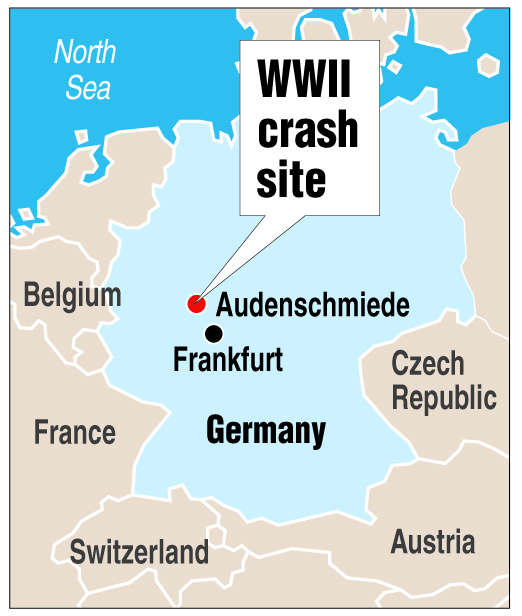German uncovers site of fatal crash of World War II pilot from Murray County
Friday, January 1, 1904
ON THE WEBVisit the Murray County Museum online at www.murraycountymuseum.comIF YOU GOHerman McDaniel, who still has family in Murray County, will return to Chatsworth on Saturday. He'll speak at an 11 a.m. dedication ceremony for a new walkway at Veteran's Memorial Park at 651 Hyden Tyler Road. The walkway is made of commemorative bricks bearing the names of more than 300 Murray County men who fought in battles dating back to the Civil War.
Herman McDaniel grew up in Murray County, Ga., and is an expert on its history. For the past eight years, he's run the Murray County Museum, which only exists online and has "Heritage in Cyberspace" as its motto.
So McDaniel knew a few facts about Capt. William Granville Hargis, a Murray County pilot who died during World War II when his fighter plane got shot down north of Frankfurt, Germany.
Still, McDaniel was stunned when he got an email from Jurgen Radu, a German man who found the online museum by doing a Google search for William Hargis, World War II and Germany.
"It gave me goosebumps when I first opened the email from him," McDaniel remembers.
Using a metal detector, Radu had uncovered the exact site near Audenschmiede, Germany, where on Feb. 23, 1945, Hargis died when his P-51 Mustang crashed after German flak guns scored a direct hit.
As rock-solid proof of his find, the German man sent McDaniel a photo of Hargis' gold U.S. Army Air Forces pilot ring -- the U.S. Air Force wasn't created until 1947 -- that has Hargis' name engraved inside.
"It makes the museum worthwhile when things like this happen," McDaniel said.
McDaniel has posted the story of Capt. Hargis on the Murray County Museum website under the World War II heading.
Before the find, little had been known about the fate of Hargis, who had enlisted on Jan. 7, 1942, in Fort Oglethorpe. Hargis, who was 26 and single when he died, had two years of college under his belt and had worked as an accountant.
The Chatsworth Times ran what McDaniel said was an "extremely brief" article on April 5, 1945, reporting that Hargis had gone missing in action some six weeks before. A few days later, the Army notified Hargis' parents he had been killed. They owned a sawmill in Murray County but had relocated to Florida at the time of Hargis' death.
"Little else was ever told his family," McDaniel said.
Eyewitness accounts
Radu bought a metal detector in 2006 and started searching for the sites of seven WWII plane crashes near his hometown of Weilmunster, Germany, where he still lives.
In 2011, his mother told him an American fighter plane had crashed a few kilometers away, near Audenschmiede. After people pointed Radu to the general area of the crash, he found the depression left by the plane's impact. It took several searches before Radu found Hargis' ring in the summer of last year.
Radu later learned from U.S. Army Air Corps documents that Hargis had been a member of the 355th Fighter Squadron, then based at Rosieres, France. He found the official air crew report of Hargis' death, along with an account by Lt. Clarence G. Koerber, a fellow pilot who was Hargis' wingman when the Murray County man died.
Koerber reported that he and Hargis were strafing north of Frankfurt when they spotted a steaming locomotive.
"Just as we pulled over the train we encountered intense 20 mm flak from the nearby woods, and I saw a fire flash on Capt. Hargis's plane," Koerber's report states. "There was a terrific explosion as [Hargis'] plane hit the trees."
Even more fascinating to McDaniel was another eyewitness account that Radu uncovered.
Radu learned that his uncle, Alfred Buchholz, who still lives in the village of Weilmunster, Germany, was 12 when he saw Hargis' plane shot down.
"It seems extremely unusual to have eyewitness accounts from opposing sides in the war. In this case, a 12-year-old German civilian on the ground and an American soldier from the air," McDaniel said.
The 12-year-old Buchholz was visiting with a German soldier whose duty was to man a flak gun set in an open field near Weilmunster. A second flak gun was positioned at the edge of nearby woods. A third was mounted on a train near the village.
Buchholz said German soldiers purposely caused the train's locomotive to spew lots of steam to entice the Americans to come closer. When the Germans heard the sound of two airplanes approaching, they all ran to their guns.
Buchholz remembered watching the plane fly lower to check out the train, then the flak gun in the field fired, followed immediately by the gun in the woods.
"He is certain that the fatal shot was fired from the flak gun on the train," McDaniel wrote in an account on his website. "Naturally this excited young boy was eager to see the crashed plane, so he pedaled his bicycle as hard as he possibly could to speed his journey to the spot where it had fallen.
"He said that only civilians who lived nearby were on the scene, and that they were all frantically trying to remove any of the wreckage that they thought they might be able to use before military personnel arrived."
Villagers took aluminum scrap from the Mustang to fashion into pots and pans, which were in short supply during the war. German military personnel salvaged larger pieces of metal, which also was in very short supply across Germany.
Civilians took Hargis' remains from the trees and buried him in the cemetery at Rohnstadt, very close to the crash site. After the war, Hargis' remains were moved to Ardennes American Cemetery and Memorial near Neuville-en-Condroz, 12 miles southwest of Liege, Belgium.
McDaniel, a retired U.S. Census Bureau employee, is now in Myrtle Beach, S.C., and hasn't lived in Murray County for 45 years.
So he turned to the Internet eight years ago to fulfill his desire to create the Murray County Museum. Advantages of an online museum include a virtually unlimited amount of space for "displays" of such items as handmade Murray County quilts and other prized possessions. McDaniel said overhead costs are minimal for the online museum, and it's open around the clock.

